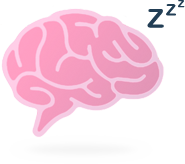Home
Mere-exposure Effect definition
First explored by Gustav Fechner in the 19th Century, the Mere-exposure Effect was then further developed between 1960-1990 by renowned psychologist Robert Zajonc, who discovered that people would react more favourably to certain stimuli the more they were exposed to it.
Humans are naturally more comfortable with and positive towards things that they are familiar with and so it is both possible to elicit a positive reaction from someone by presenting them with something familiar or indeed by making something familiar to them through repeated exposure. One of Zajonc’s experiments consisted of showing people nonsense characters that looked like Chinese symbols and asking them to guess the meaning. After they had been shown the same symbols several times, the meanings offered become more and more positive as, even subconsciously, people had become more familiar with those symbols.
In marketing, the Mere-exposure Effect can be used in many ways. Of course, you want to stand out to a certain extent but being too different from other brands that people are already familiar with could result in distrust. You can make your own brand appear instantly more familiar by basing your logo, design or features on other similar brands that already have a loyal following. This similarity, even if it is slight and will only tap in to the customer’s subconscious, will instantly make people feel more trustful of your brand. Another way is to utilise a familiar figure to help make this connection more instantaneous; for example, when brands use a celebrity endorsement it is so successful, not because that celebrity is an expert on the product or industry or because we even trust their judgment, but because they are a familiar face to us and therefore we are immediately drawn towards them and the product they are representing.

Oops, you have reached your limit of 1 free tactic per hour
To get unlimited access to our 250+ tactics,
Join our FREE mailing list
Or wait 00:59:59





